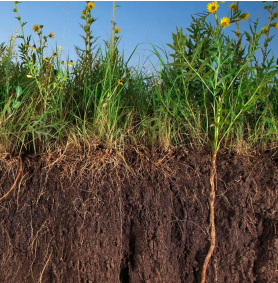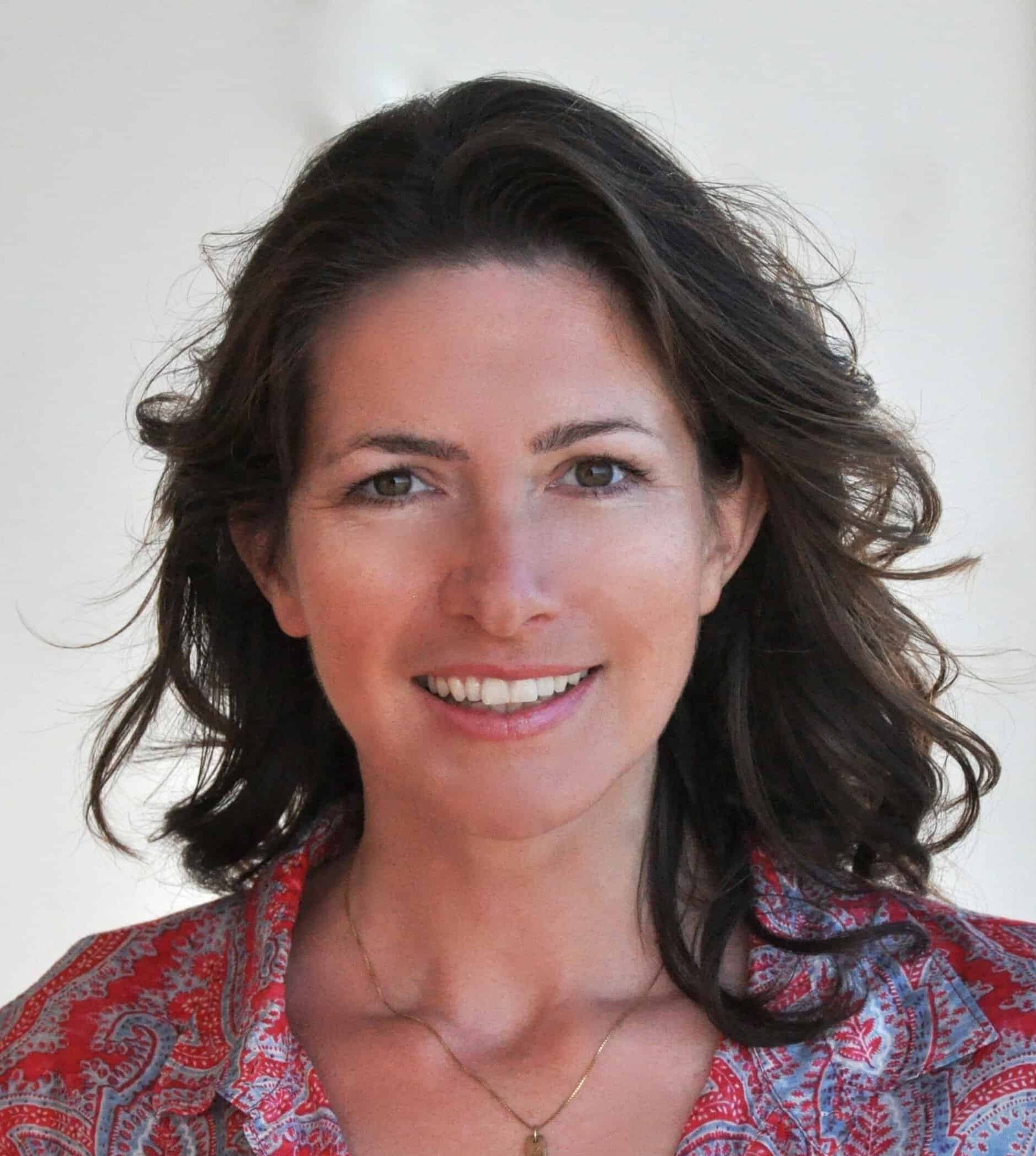The solution to stopping climate change might be buried on 10 acres in the Pauma Valley of California. In the early morning before the sun will rise above the hills and torch the valley, Bea Alvarez picks plump, ripe blackberries and sun-dried strawberries straight from the plants. In the “food forest” between hedgerows of native sage, manzanita and elderberries grow rows of salad greens, kale, grapes, zucchini, sunflowers and asparagus, all without pesticides or artificial fertilizer.
“The idea is not just to produce food but to improve the soil,” says Alvarez, Solidarity Farm’s Climate Resilience Specialist. “We stopped using the plow to turn the soil, and we do a lot of composting and mulching to improve our soil health.”
Solidarity Farm had used organic principles in the 10 years since its inception, but it pivoted to carbon farming after the extreme heat in the summer of 2017, when the temperature rose to 122 degrees Fahrenheit and destroyed most of its crops. Carbon farmers cultivate plants and trees in a way that maximizes carbon sequestration in the soil. “It was an emergency. We reevaluated what we were doing, and how,” says farm co-owner Hernan Cavazos, sitting on his tractor. “The implications were clear: start building resilience now or give up on a livelihood derived from agriculture. We want to grow healthy foods for our kids and our community.”
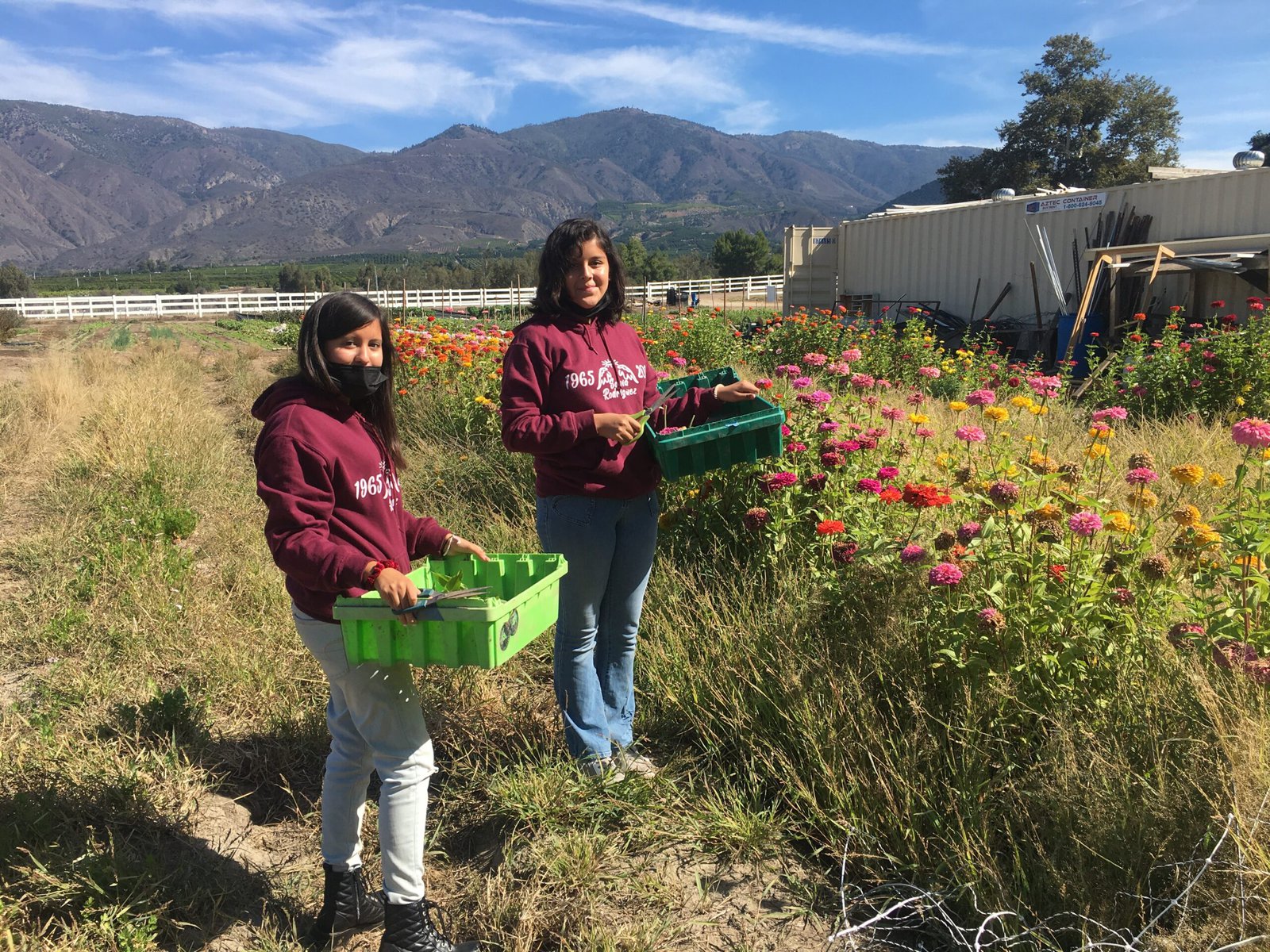
In cooperation with the Pauma Band of Luiseno Indians — which owns the 10 acres of land Solidarity Farm leases and who work the olive orchard and vineyards across the street — the farmers applied for a healthy soil grant, pivoted to regenerative farming and started the Carbon Sink Demonstration Farm, where they regularly test the soil. (Alvarez uses the terms regenerative and carbon farming interchangeably: “What it means is increasing the amount of carbon in the soil by employing best regenerative practices, such as no till.”)
What exactly does soil have to do with climate change? The UN has warned that the concentration of carbon dioxide in the atmosphere increased at record speed last year to hit a level not seen for more than three million years. The world urgently needs to reduce emissions, but studies also confirm that it will be impossible to stop climate change without changing agriculture. In the atmosphere, too much carbon heats up the climate. However, in the ground, carbon is beneficial. Plants absorb carbon dioxide through photosynthesis, and it is later stored in living biomass or as organic matter in the soil. The renowned Project Drawdown cites the potential for global agricultural lands to sequester 489 billion tons of CO2, which is roughly equal to the world un-burning all of the fossil fuels from the last 15 years.
Crushed by negative news?
Sign up for the Reasons to be Cheerful newsletter.Many people are surprised to learn that the emissions of food, agriculture and land use (24 percent of global emissions) nearly tie electricity generation (25 percent). Among the most important practices for carbon farmers are minimizing soil erosion by planting perennials and ground cover, which also lowers soil temperatures, and only working the land by hand or with low-tech solutions.
“The soil has the capacity to store more carbon than all plants on the planet together. So, the potential is exponential,” Alvarez says. She likens tilling to “creating an earthquake; everything tumbles over and is destroyed. When you minimize the disturbance of the soil, you allow the soil the capacity to store carbon in deeper levels.”
Worldwide, we are currently losing topsoil at a rate of 30 soccer fields per minute, gradually turning a third of the world into a desert. If we continue at this rate, we will run out of fertile topsoil in 60 years. With its soil, the planet not only loses a valuable, life-sustaining resource but also releases carbon into the air. According to Ohio State University, the planet has released 50 to 70 percent of its natural carbon from the ground into its atmosphere since the beginning of modern agriculture.
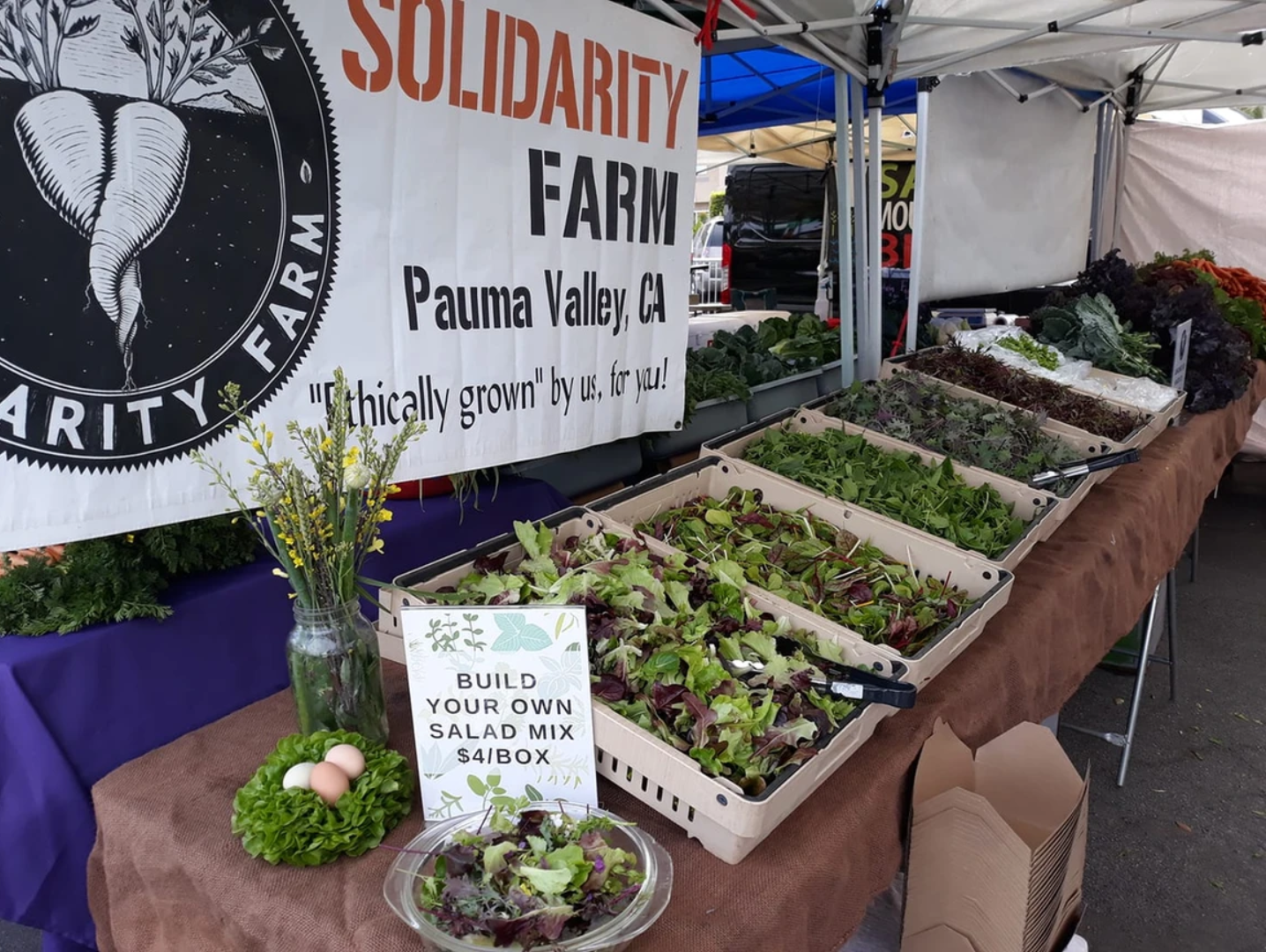
Solidarity Farms produces a diverse range of about 60 different fruits and vegetables, at least 70 percent of them perennial crops such as plums and pomegranates. Stacks of organic chicken manure in front of the vegetable beds wait to be distributed. The farmers enrich the soil with compost and mulch, while deterring pests with diverse crop rotation. The native hedgerows act as windbreaks, attract pollinators and also slow erosion from the wind.
With these methods, the farmers were not only able to improve their crop yield but because the carbon in the soil acts as a sponge, they also reduced their water use. Agriculture is responsible for roughly 85 percent of global water use, so saving water amid the drought is another climate issue regenerative farming addresses.
According to soil tests, the Solidarity farmers have tripled the amount of carbon in the ground since 2018. “This equates to a drawdown of nearly 600 metric tons of CO2 per year, offsetting the emissions of 80 American households,” Alvarez says.
The idea of “regenerative farming” is simple and ancient: The mother soil, which nurtures the harvest, in turn has to be nurtured and protected. Every farmer knows this — at least if they haven’t forgotten the principle over decades of industrial tilling, extracting as much from the soil as possible. The climate potential in returning to these traditional practices is enormous.
A study in the journal Science Advances found that better management of forests, grasslands and soils in the United States could remedy as much as 21 percent of the country’s annual greenhouse gas emissions. “If we get the soil right, we can fix a lot of our issues,” says Ray Archuleta, a conservation agronomist and farmer who founded the Soil Health Academy and has traveled all over the country. “Healthy soil leads to a healthy plant, healthy human, healthy climate.”
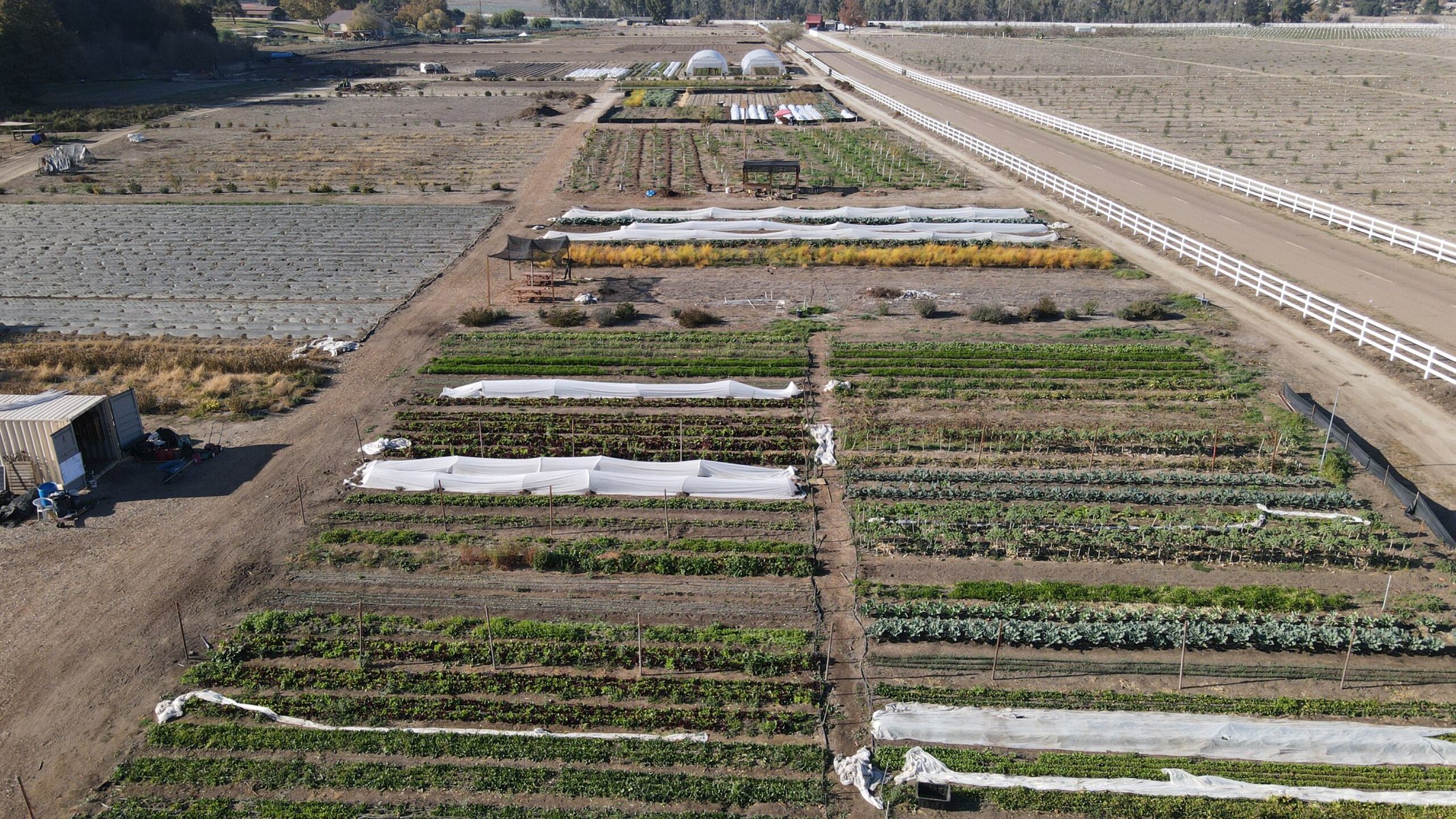
The Project Drawdown report likens these solutions to stopping a rapidly overflowing bathtub: “Cutting emissions is like turning off the faucet; it addresses the source of the problem. Carbon sinks are like the mop; they can help clean up the mess you already caused. Both are helpful, but they are not substitutable.”
The Solidarity farmers cite Ohio State University professor Rattan Lal: “A two percent increase in the carbon content of the planet’s soils could offset 100 percent of all greenhouse gas emissions going into the atmosphere.”
Others believe the effect to be more marginal. They caution that global warming leads to more wildfires, thus releasing more carbon into the atmosphere, and that the demand to feed the growing population has us heading in the opposite direction: more deforestation, more synthetic fertilizers and pesticides, more acres of natural land being converted for industrial farming. Whether regenerative farming will make a dent depends not only on how many farmers and states get on board, but on how every single person eats, drinks and shops.
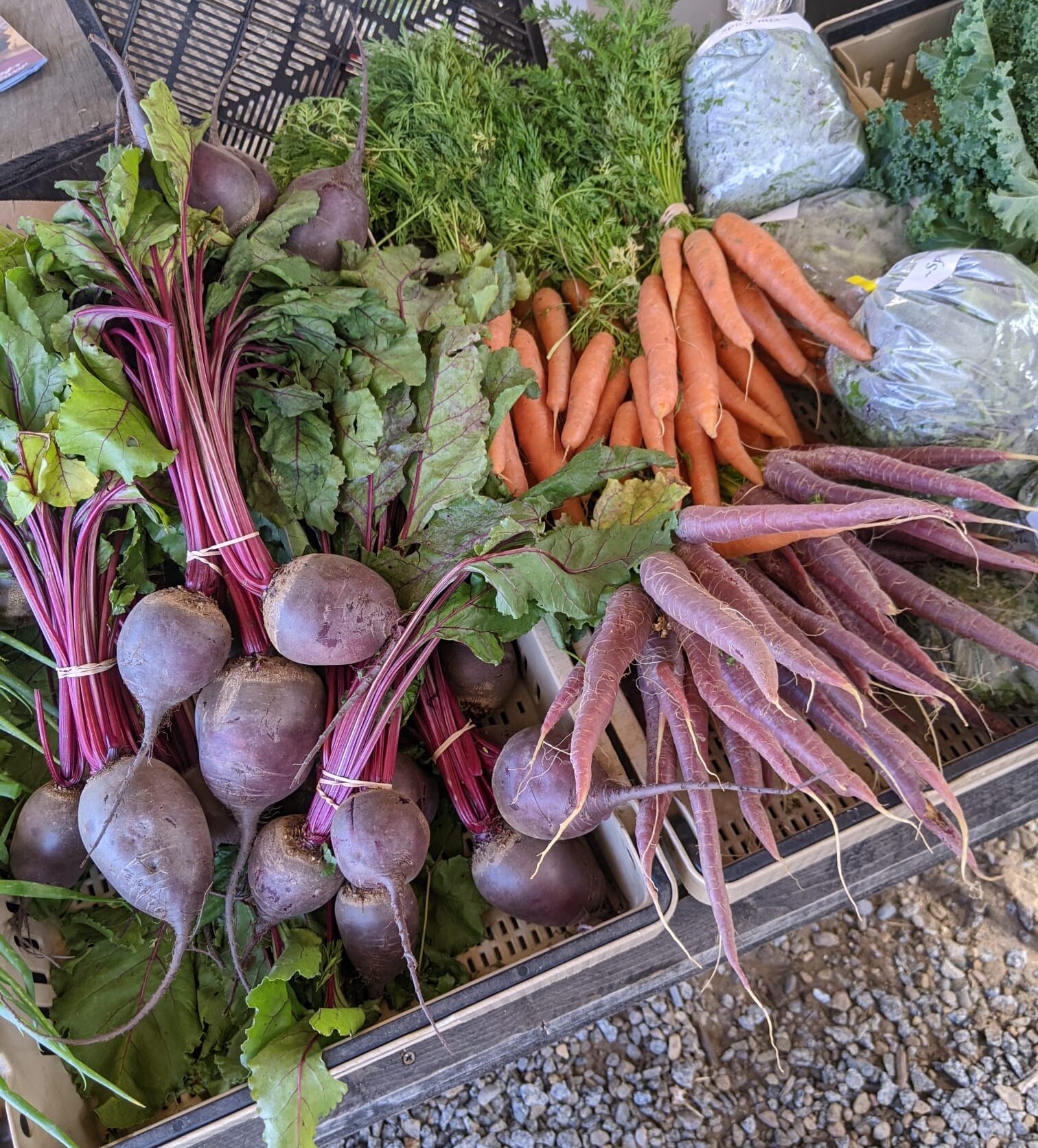
Therefore the three co-owners and two employees at Solidarity Farm not only focus on nourishing their crops but also on nourishing their network. “I don’t want to make my farm bigger, but I want to grow the community,” co-owner Hernan Cavazos says. The farmers regularly host school classes as well as aspiring farm students. At the back of the property are “incubator lots” where budding farmers can try out regenerative principles on a third of an acre. “A lot of people dream of growing their own food,” Alvarez says with a knowing smile. “But it’s tough work, and we give people an opportunity to try out if this is really for them.”
Many of the people who work here are not your usual farmers. Alvarez, for instance, grew up as a “city girl” in Buenos Aires and then worked in Los Angeles as a web designer before moving to Solidarity Farm in 2018. “I was very embedded in the digital world, and I felt I was missing out on life,” she says.
Cavazos, built like an oak, was a professional basketball player and made the Mexican National Team at age 17 before turning into a punk rocker, a social activist and now a farmer. In his native Sinaloa, he saw big ag buy up the small farms, plant monocultures and destroy not only the livelihoods of the locals but also the health of the soil. “That got me thinking,” he says, shaking his head, and with it, his chest-long dark mane, “How can we turn the corner from that type of greed and create a healthier, more equitable and kind farming?”
It’s 8 a.m., and the thermometer already shows 88 degrees. Cavazos is convinced that his plants are more resilient to heat and other climate stressors in healthy soil because “the soil acts as a cushion that stays moist and protects their roots.” When he picks up a handful of dark topsoil, a bunch of worms wiggle in his hands. He calls them his “best coworkers.” There are also preliminary studies that indicate soil with a healthy microbiome might produce vegetables with more nutrients. Anthony Myint, California chef and co-founder of the non-profit Zero Foodprint, points to research from the Bionutrient Food Association “showing that the carrot from healthy soil might have as much as 90 times the antioxidants, 15 times the potassium.”
Instead of “selling to whoever can pay me the most,” in 2020, Cavazos established Foodshed, a food distribution network with 50 other small farms, of which two-thirds are BIPOC-owned. In addition to its small farmstand on the land, Solidarity runs a grocery store in nearby San Diego. The store is located in City Heights, a part of town known for its high poverty and immigration rates.
“Immigrants have been pushed to produce a huge amount of the food in the US, but we have no ownership, no say where it’s going,” he says. “For so long, the extra effort that goes into organic food means only wealthy people can afford it,” his wife Ellee Igoe, Solidarity Farm’s third co-owner, adds.
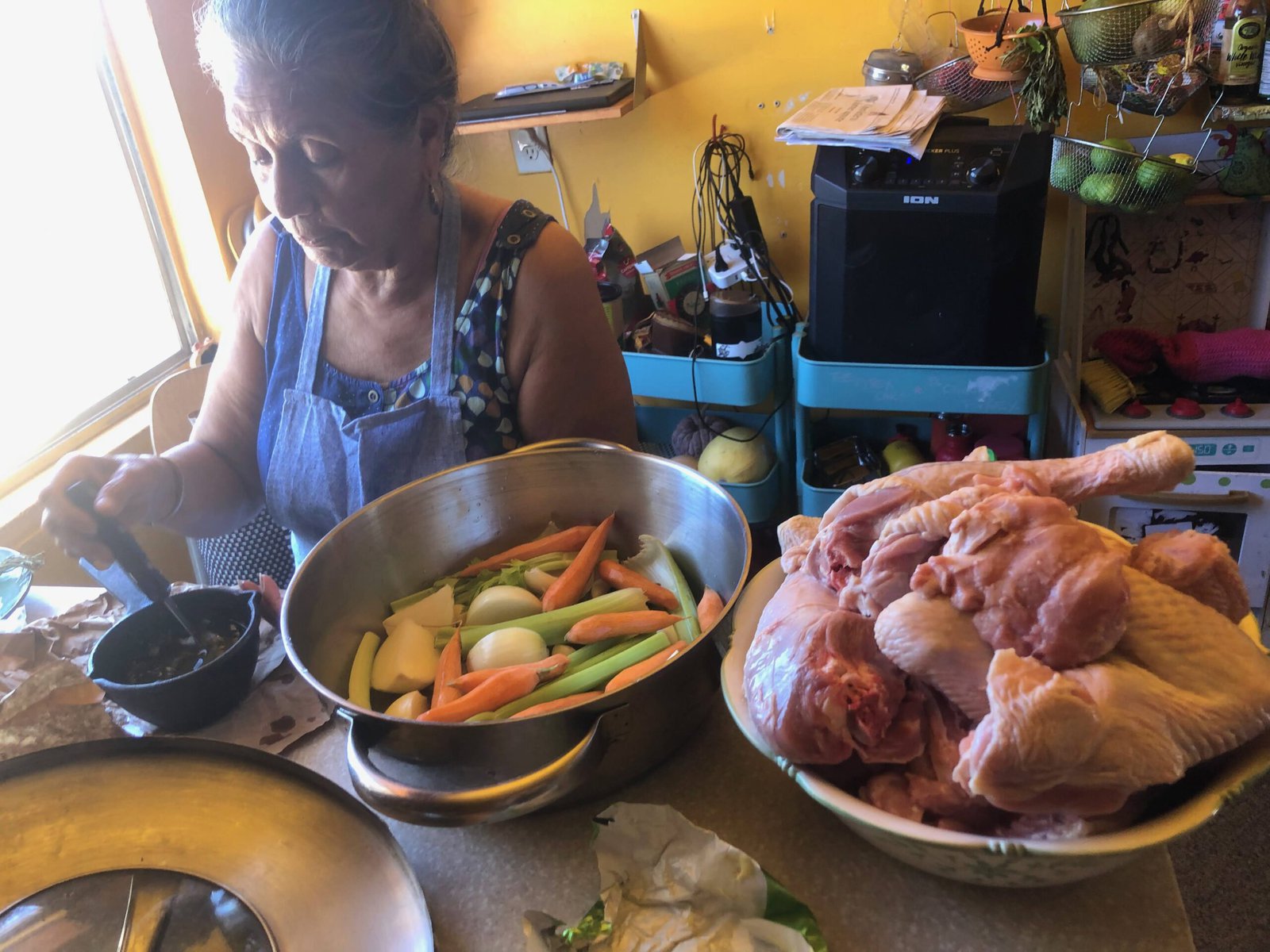
They both want to “bridge the gap between local farmers and low-income residents who are struggling to purchase healthy food.” Igoe wears a black shirt with the slogan, “Food not patriarchy.” The couple met at an activist conference in Mexico, and they care as much about food justice as healthy tomatoes.
Foodshed is changing the paradigm through several strategies. “Across the modern food system, fewer than 15 cents per food dollar is actually paid to the farmers who grow our food,” Cavazos points out. But in the Foodshed distribution system, 80 percent of each “food dollar” goes to the farmer, five percent of all sales go towards regenerative agriculture research and implementation, and if any profit is earned, the remaining 15 percent are paid back to the farmers through profit sharing at the end of each year. Solidarity Farm is able to turn a profit.
Next to the farmstand, Bea Alvarez and Kristin Kvernland, Foodshed’s supply coordinator, are busy washing freshly cut salad greens, packing them in boxes for home-delivery to low-income residents. Each week, they sell 220 food boxes through the University of California, San Diego, where doctors prescribe the nutrient-dense foods to patients with food-related illnesses such as diabetes, high blood pressure and obesity.
For Cavazos, this strategy fulfills several goals at once: He is convinced this way of farming raises the resilience of the plants, the farm, and the larger community: “I want my food to go to the people who benefit the most.”








